Hyun-Woo Kim
SSASS: Semi-Supervised Approach for Stenosis Segmentation
Nov 17, 2023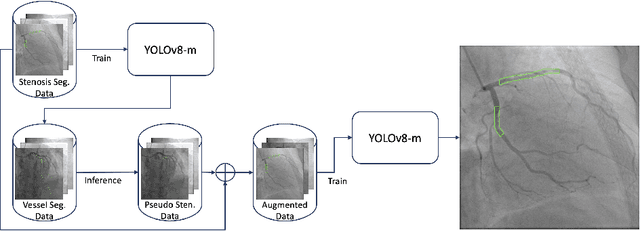
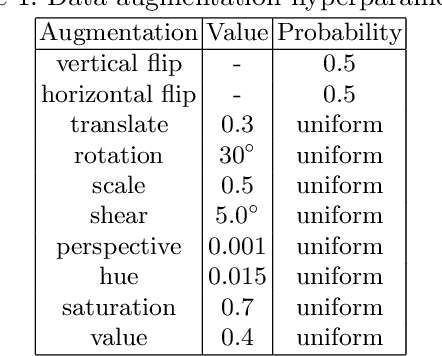
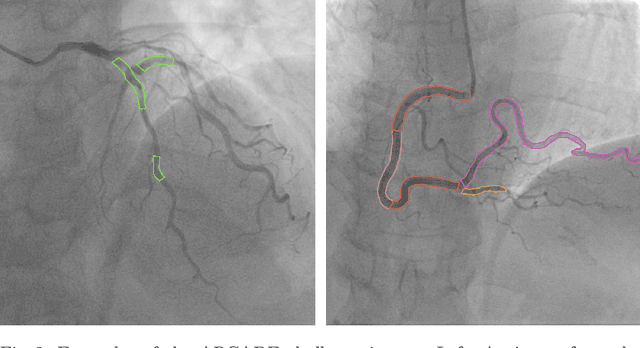

Abstract:Coronary artery stenosis is a critical health risk, and its precise identification in Coronary Angiography (CAG) can significantly aid medical practitioners in accurately evaluating the severity of a patient's condition. The complexity of coronary artery structures combined with the inherent noise in X-ray images poses a considerable challenge to this task. To tackle these obstacles, we introduce a semi-supervised approach for cardiovascular stenosis segmentation. Our strategy begins with data augmentation, specifically tailored to replicate the structural characteristics of coronary arteries. We then apply a pseudo-label-based semi-supervised learning technique that leverages the data generated through our augmentation process. Impressively, our approach demonstrated an exceptional performance in the Automatic Region-based Coronary Artery Disease diagnostics using x-ray angiography imagEs (ARCADE) Stenosis Detection Algorithm challenge by utilizing a single model instead of relying on an ensemble of multiple models. This success emphasizes our method's capability and efficiency in providing an automated solution for accurately assessing stenosis severity from medical imaging data.
MPSeg : Multi-Phase strategy for coronary artery Segmentation
Nov 17, 2023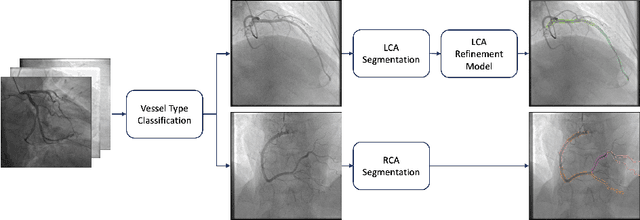
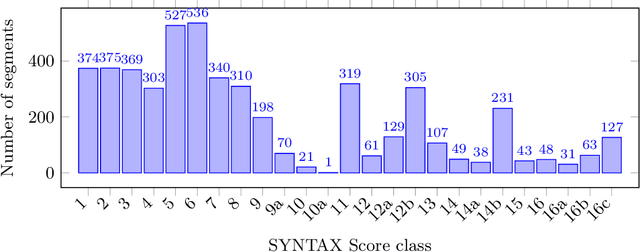
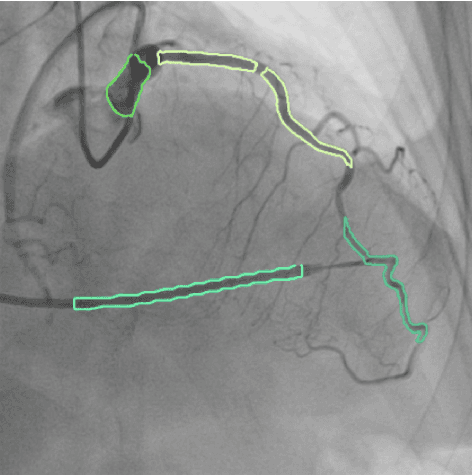
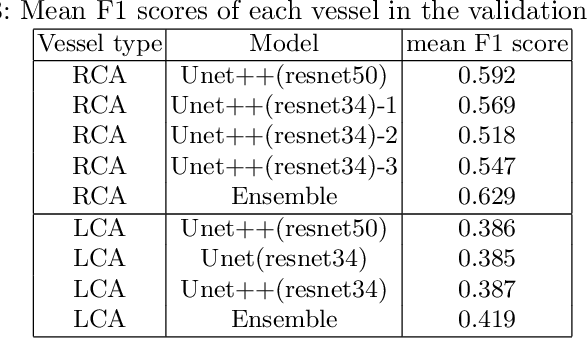
Abstract:Accurate segmentation of coronary arteries is a pivotal process in assessing cardiovascular diseases. However, the intricate structure of the cardiovascular system presents significant challenges for automatic segmentation, especially when utilizing methodologies like the SYNTAX Score, which relies extensively on detailed structural information for precise risk stratification. To address these difficulties and cater to this need, we present MPSeg, an innovative multi-phase strategy designed for coronary artery segmentation. Our approach specifically accommodates these structural complexities and adheres to the principles of the SYNTAX Score. Initially, our method segregates vessels into two categories based on their unique morphological characteristics: Left Coronary Artery (LCA) and Right Coronary Artery (RCA). Specialized ensemble models are then deployed for each category to execute the challenging segmentation task. Due to LCA's higher complexity over RCA, a refinement model is utilized to scrutinize and correct initial class predictions on segmented areas. Notably, our approach demonstrated exceptional effectiveness when evaluated in the Automatic Region-based Coronary Artery Disease diagnostics using x-ray angiography imagEs (ARCADE) Segmentation Detection Algorithm challenge at MICCAI 2023.
Weakly Supervised Thoracic Disease Localization via Disease Masks
Jan 25, 2021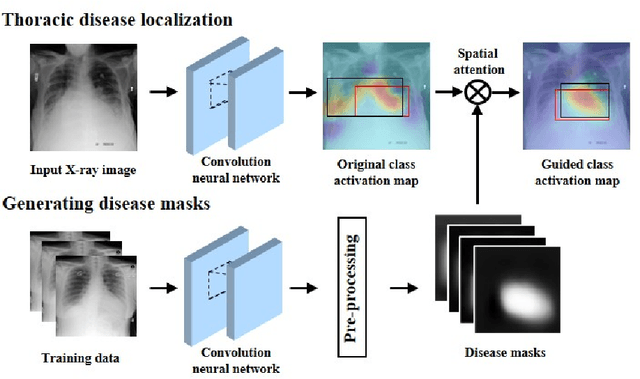
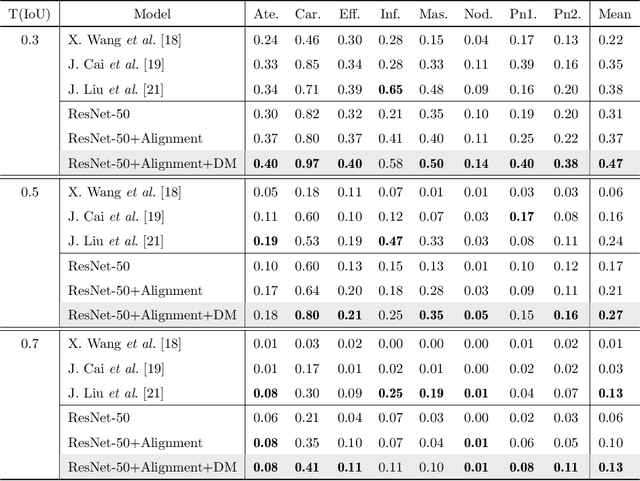
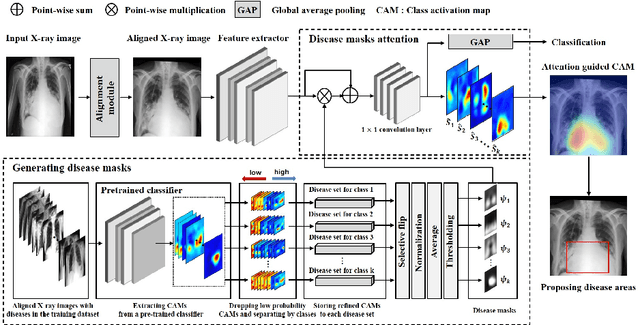
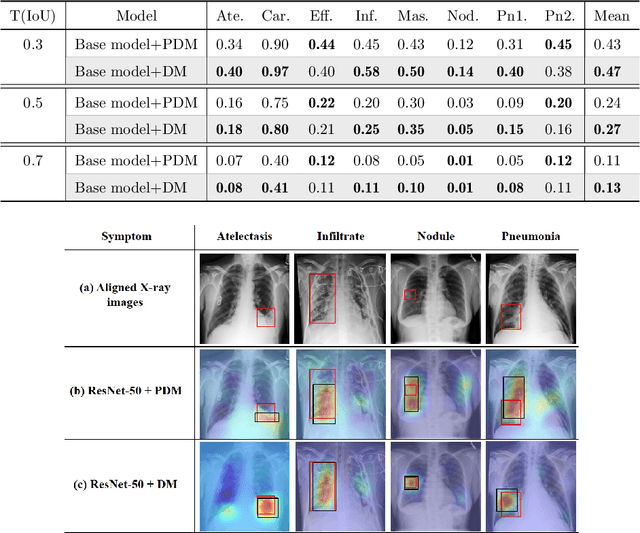
Abstract:To enable a deep learning-based system to be used in the medical domain as a computer-aided diagnosis system, it is essential to not only classify diseases but also present the locations of the diseases. However, collecting instance-level annotations for various thoracic diseases is expensive. Therefore, weakly supervised localization methods have been proposed that use only image-level annotation. While the previous methods presented the disease location as the most discriminative part for classification, this causes a deep network to localize wrong areas for indistinguishable X-ray images. To solve this issue, we propose a spatial attention method using disease masks that describe the areas where diseases mainly occur. We then apply the spatial attention to find the precise disease area by highlighting the highest probability of disease occurrence. Meanwhile, the various sizes, rotations and noise in chest X-ray images make generating the disease masks challenging. To reduce the variation among images, we employ an alignment module to transform an input X-ray image into a generalized image. Through extensive experiments on the NIH-Chest X-ray dataset with eight kinds of diseases, we show that the proposed method results in superior localization performances compared to state-of-the-art methods.
 Add to Chrome
Add to Chrome Add to Firefox
Add to Firefox Add to Edge
Add to Edge